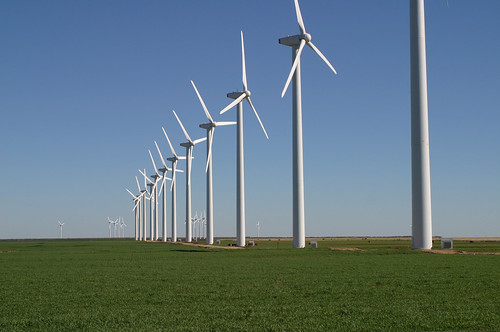Wind Farms Forced on Rural Ontario
Wind Turbines Are Eyesores
Wind Turbines Don't Turn When Power's Needed Most
Closing
Back To Top
Introduction
There are a number of arguments that have been raised against wind turbines in Ontario. A mere three are that: The wind turbines were forced on residents of rural areas by the current Liberal government; the turbines are eyesores; the turbines don't generate power when it's needed most.
Back To Top
Wind Farms Forced on Rural Ontario
Although there appears to be little record of it on the internet, many residents of rural Ontario feel like the provincial Liberals have forced wind turbines into the landscape, giving the affected residents and municipalities little say in the matter.
At the least, Energy Minister Chris Bentley has said (in February 2012) that rural municipalities will have some say in the locations of wind farms, but there's little to suggest that rural municipalities will be able to outright refuse wind farms.
On the one hand, it makes sense that this lack of democratic choice has caused so much protest on the part of rural Ontario, but on the other it could be seen as a provincial government simply doing what a provincial government does: govern.
In a democratic society the governing process needs to involve the say of the governed, but going around that brings up one major question.
Were wind turbines, in any form, mentioned in any of the Liberals' platforms for the 2003 and 2007 elections?
No, not specifically, at least.
But a quick Google search turns up the 2003, the 2007, and the 2011 platforms.
A search for the word "energy" in these platforms reveals an emphasis on "clean" and "renewable" energy in the 2003 platform; the statement that the Liberals will
"Make our energy greener and cleaner, with the province’s first long-term energy plan in a generation. Our plan will replace coal by doubling renewables and doubling conservation" (page 6)in the 2007 platform; and energy that's described as "clean," "green," and "renewable" is mentioned throughout the 2011 platform (which also includes dramatic shots of people in front of wind turbines).
The references to renewable power are vague, yes, but they do hint towards things like wind power - it may sound cruel, but Ontario got what it voted for.
Because the Liberals have had a majority in the past three elections, running on a platform with a mention of such energy (though not explicitly "wind power" or "wind farms"), it's logical to conclude that even if rural Ontario wasn't unanimously for the Liberals in the 2003, 2007, or 2011 election, the province at large was, and the Liberals could take that acceptance (even as narrow as it was in the 2011 contest) as a green light to do what they thought best for the province.
Back To Top
Wind Turbines Are Eyesores
To argue that wind turbines are eyesores and blots on the previously pristine Ontario countryside is to do what some likely did when skyscrapers first began to be built. City skylines have indeed been changed by the presence of the skyscraper, but these former eyesores have since become part of the cultural idea of what a city is - arguably worldwide.
Now, it's true that wind turbines can't exactly be compared to skyscrapers in all respects - it's much easier to make a building aesthetically pleasing because all it has to do is stand firm, when moving parts get added to the mix and these parts' motion needs to be efficient things get more complicated. However, places like Germany, where wind power is used to a great degree, don't seem to have much of a problem with the turbines and their appearance.
They're clumped together, sure, but that doesn't really make things that bad.
Anyway, having wind turbines dot the landscape is not a bad thing, it adds variety to an otherwise repetitive skyline. Forests and fields and cliffs and ravines are excellent, but adding in some wind turbines isn't necessarily that bad.
And though they may make some stretches of countryside less appealing to some people, they have attracted tourists to others, and will help to make those spaces left untouched even more prized than they are already.
Back To Top
Wind Turbines Don't Turn When Power's Needed Most
Another argument lobbed against wind power (in Ontario, at least) is that when the power that these turbines generate is most needed it's nowhere to be found. The best example of this are hot summer days where the oh-so-necessary wind isn't blowing, and the turbines sit idle.
However, if excess power generated by wind turbines is stored in the grid during peak hours/days, then this argument is rather toothless. On the other hand, if excess power from wind turbines is not stored in the grid (or elsewhere), then more planning in that regard is definitely necessary.
Back To Top
Closing
Check back here Wednesday for an article on the newest news, and check back on Friday for a hunt for the good in The Darkest Hour.
Back To Top

No comments:
Post a Comment